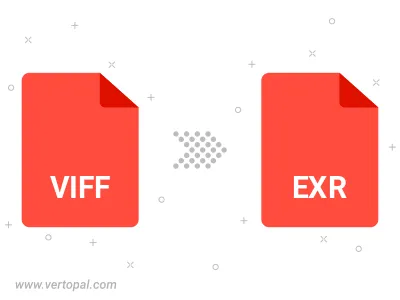Convert VIFF to EXR
Convert VIFF images to EXR format, edit and optimize images online and free.

The Khoros Visualization Image File Format (VIFF), developed by AccuSoft Corporation, is a bitmap image format used primarily within the Khoros software environment for scientific and engineering applications. It supports various image types, including grayscale, color, and multi-spectral images, making it useful for visualizing complex datasets. Despite its powerful capabilities, VIFF is now considered somewhat obsolete due to the emergence of newer, more versatile image formats. However, it remains an important part of the history of image processing and visualization technologies.
The EXR file extension stands for OpenEXR, a high dynamic range (HDR) image file format developed by Industrial Light & Magic (ILM) in 1999 for visual effects and film production. OpenEXR is widely used for its ability to store multi-channel, floating-point images, supporting complex visual effects workflows with superior image quality and precision. Its features include lossless and lossy compression, arbitrary image channels, and a flexible data structure, making it an essential tool in professional digital imaging and animation industries.
Choose any VIFF image from your computer, or drag & drop a VIFF file onto this page.
Use any available VIFF to EXR tools on the preview page and click Convert.
When the conversion status changes to successful, click on the Download button to get the final EXR image.

To change VIFF format to EXR, upload your VIFF file to proceed to the preview page. Use any available tools if you want to edit and manipulate your VIFF file. Click on the convert button and wait for the convert to complete. Download the converted EXR file afterward.
Follow steps below if you have installed Vertopal CLI on your macOS system.
cd to VIFF file location or include path to your input file.Follow steps below if you have installed Vertopal CLI on your Windows system.
cd to VIFF file location or include path to your input file.Follow steps below if you have installed Vertopal CLI on your Linux system.
cd to VIFF file location or include path to your input file.